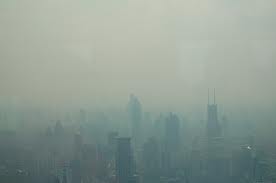China shutters factories to meet green deadline
 China has ordered 2,087
China has ordered 2,087companies to close polluting plants in an effort to meet its own
deadline for reducing energy consumption, reports the Agence-France
Presse.
China, which now consumes more energy than any other country,
has pledged to cut its energy use per unit of gross domestic
product by 20% between 2006 and 2010, according to the story.
To meet its own deadline for reducing energy use and pollution,
China is ordering the closure of thousands of polluting plants. In
this March 3, 2009 photo, factories emit smoke in Shanghai.
This month, to avoid the embarrassment of missing that deadline,
AFP says China ordered firms producing steel, coal and other
materials to close obsolete plants by the end of September – or
risk losing bank loans and electricity.
“It is a gesture to show that the country is trying its best to
achieve the target,” Andy Xie, an independent economist based in
Shanghai, told AFP. “The leaders need to save face.” The story
adds:
Leaders in Beijing have been keen to
promote their green credentials.
Ahead of global climate talks in Copenhagen last year, they
pledged to reduce China’s carbon intensity – the measure of
greenhouse gas emitted per unit of economic activity – by 40-45
percent by 2020 based on 2005 levels.
China has earmarked 738 billion dollars to invest in developing
clean energy over the next decade as it seeks to meet a target of
generating 15 percent of its energy from renewable sources –
mainly wind and water – by 2020.
It will host an extra round of climate talks in October before a
UN summit in Mexico at the end of the year, as nations attempt to
devise a successor to the Kyoto Protocol, whose binding targets
expire in 2012.
“If Beijing fails to hit the 2010 target by a wide margin, its
credibility on climate change commitments will be subject to a
great deal of international scepticism,” said Damien Ma, an analyst
with the New York-based Eurasia Group, a political risk research
and consulting firm.
At the end of 2009, China had reduced its energy consumption per
unit of GDP by 14 percent, analysts said. But in the first six
months of this year, it rose 0.09 percent – the first year-on-year
increase since 2006.
Striking a balance between maintaining economic growth and
reducing pollution is difficult, Australian academic Frank Jotzo
told AFP.
“They have got a really big battle at hand with the very rapid
expansion of the economy,” said Jotzo, deputy director of the
Climate Change Institute at Australian National University.
While previous attempts to close high-polluting factories have
been less than successful – new plants often rise from the ashes
of the old ones – the stakes are much higher this time, analysts
say.
The central government has been “leaning hard” on local
officials, threatening to rescind their promotions if they fail to
meet energy reduction targets, said Ma.
“I think the government understands that if it misses the 20
percent target, it will reflect very badly on China’s reputation,”
said Yang Ailun, climate and energy campaign manager at Greenpeace
China.
Yang likened the closure of factories to putting a band-aid over
China’s pollution woes, which have been worsened by decades of
rampant economic growth.
Source: globalwarming.einnews.com

